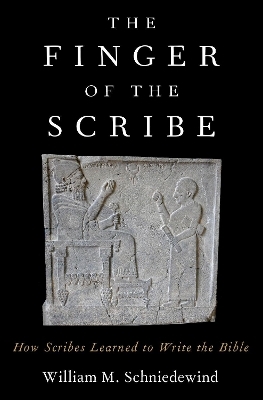
The Finger of the Scribe
How Scribes Learned to Write the Bible
Seiten
2019
Oxford University Press Inc (Verlag)
978-0-19-005246-1 (ISBN)
Oxford University Press Inc (Verlag)
978-0-19-005246-1 (ISBN)
The Finger of the Scribe summarizes the evidence for how, when, and where scribes learned to write ancient Israel. Putting together new data from archaeological excavations as well as new interpretations from ancient inscriptions, this book pieces together early education and shows how that education influenced the writing of biblical literature.
One of the enduring problems in biblical studies is how the Bible came to be written. Clearly, scribes were involved. But our knowledge of scribal training in ancient Israel is limited. William Schniedewind explores the unexpected cache of inscriptions discovered at a remote, Iron Age military post called Kuntillet 'Ajrud to assess the question of how scribes might have been taught to write. Here, far from such urban centers as Jerusalem or Samaria, plaster walls and storage pithoi were littered with inscriptions. Apart from the sensational nature of some of the contents-perhaps suggesting Yahweh had a consort-these inscriptions also reflect actual writing practices among soldiers stationed near the frontier. What emerges is a very different picture of how writing might have been taught, as opposed to the standard view of scribal schools in the main population centers.
One of the enduring problems in biblical studies is how the Bible came to be written. Clearly, scribes were involved. But our knowledge of scribal training in ancient Israel is limited. William Schniedewind explores the unexpected cache of inscriptions discovered at a remote, Iron Age military post called Kuntillet 'Ajrud to assess the question of how scribes might have been taught to write. Here, far from such urban centers as Jerusalem or Samaria, plaster walls and storage pithoi were littered with inscriptions. Apart from the sensational nature of some of the contents-perhaps suggesting Yahweh had a consort-these inscriptions also reflect actual writing practices among soldiers stationed near the frontier. What emerges is a very different picture of how writing might have been taught, as opposed to the standard view of scribal schools in the main population centers.
William M. Schniedewind has been a Professor of Biblical Studies and Northwest Semitic Languages at UCLA for twenty-five years. He has been the Chair of the Department of Near Eastern Languages and Cultures and held the Kershaw Endowed Chair of Ancient Eastern Mediterranean Studies. Professor Schniedewind is the author of six books and numerous articles.
Preface
Abbreviations
Chapter 1: The Emergence of Scribal Education in Ancient Israel
Chapter 2: Scribal Curriculum at Kuntillet 'Ajrud
Chapter 3: Alphabets and Acrostics
Chapter 4: From Lists to Literature
Chapter 5: Letters, Paragraphs, and Prophets
Chapter 6: Proverbial Wisdom Sayings
Chapter 7: Advanced Education
Epilogue
Bibliography
Notes
| Erscheinungsdatum | 10.10.2019 |
|---|---|
| Verlagsort | New York |
| Sprache | englisch |
| Maße | 157 x 236 mm |
| Gewicht | 499 g |
| Themenwelt | Religion / Theologie ► Christentum ► Kirchengeschichte |
| Geisteswissenschaften ► Religion / Theologie ► Judentum | |
| Sozialwissenschaften ► Soziologie ► Spezielle Soziologien | |
| ISBN-10 | 0-19-005246-5 / 0190052465 |
| ISBN-13 | 978-0-19-005246-1 / 9780190052461 |
| Zustand | Neuware |
| Haben Sie eine Frage zum Produkt? |
Mehr entdecken
aus dem Bereich
aus dem Bereich
von Athanasius bis Gregor dem Großen
Buch | Softcover (2024)
C.H.Beck (Verlag)
CHF 18,90
mein Leben mit Benedikt XVI.
Buch | Hardcover (2023)
Verlag Herder
CHF 39,90


